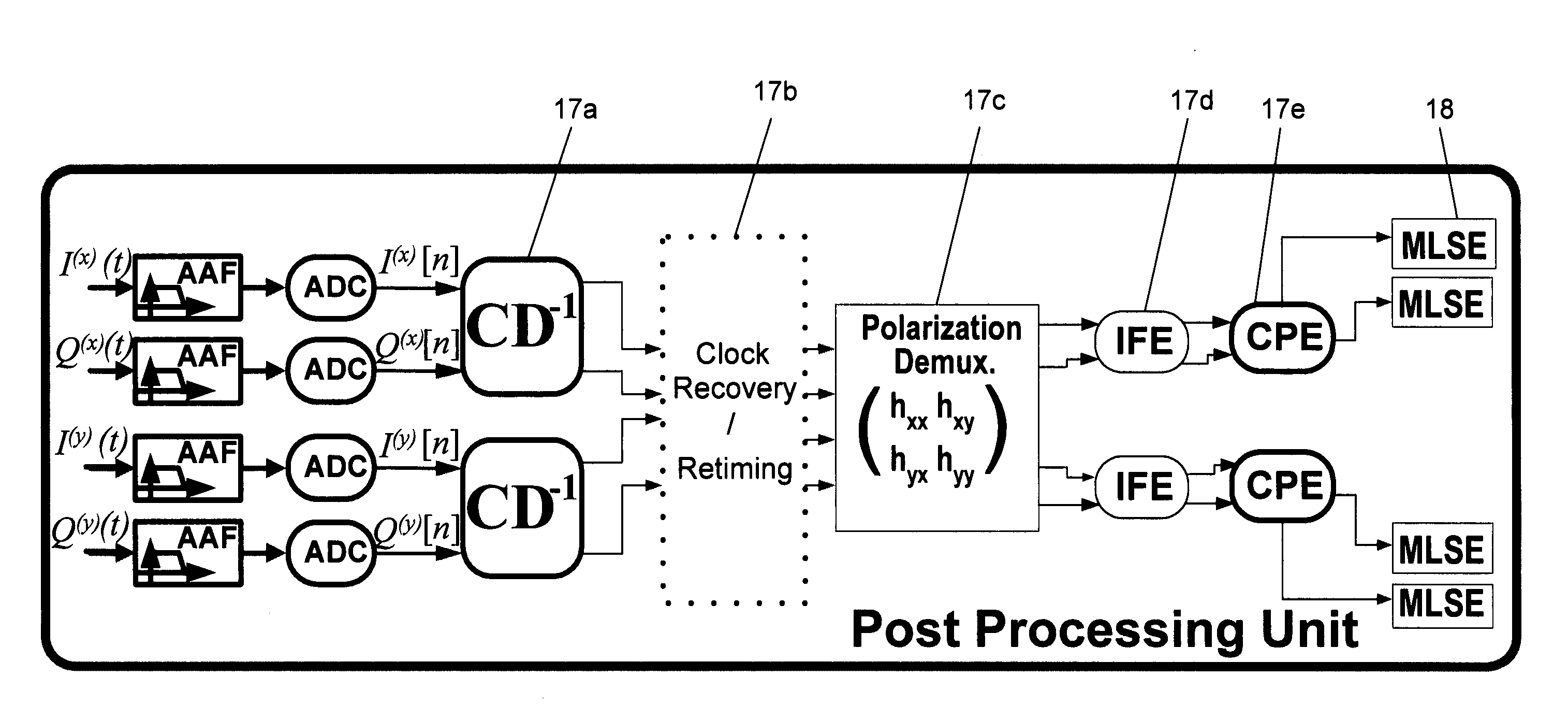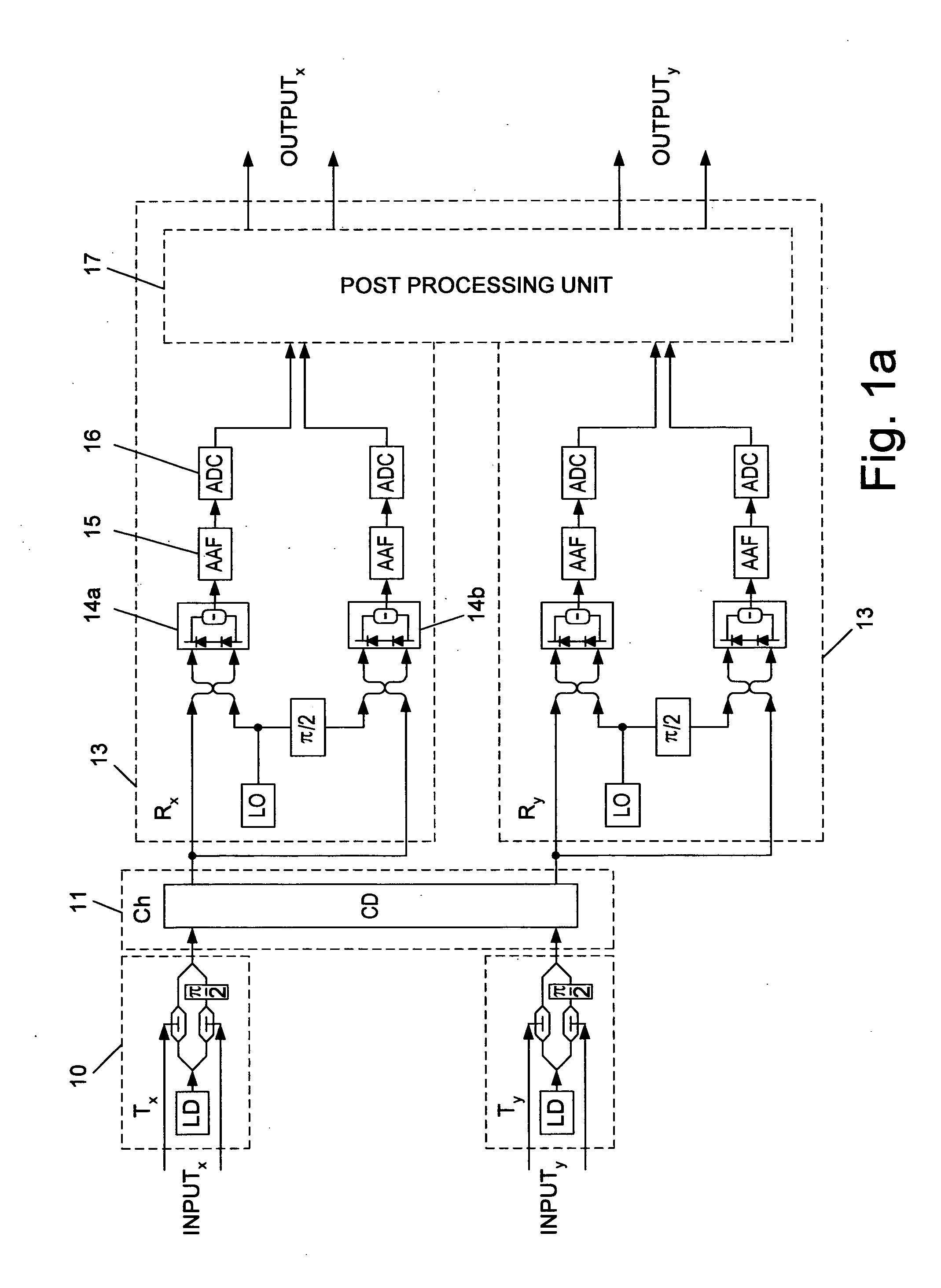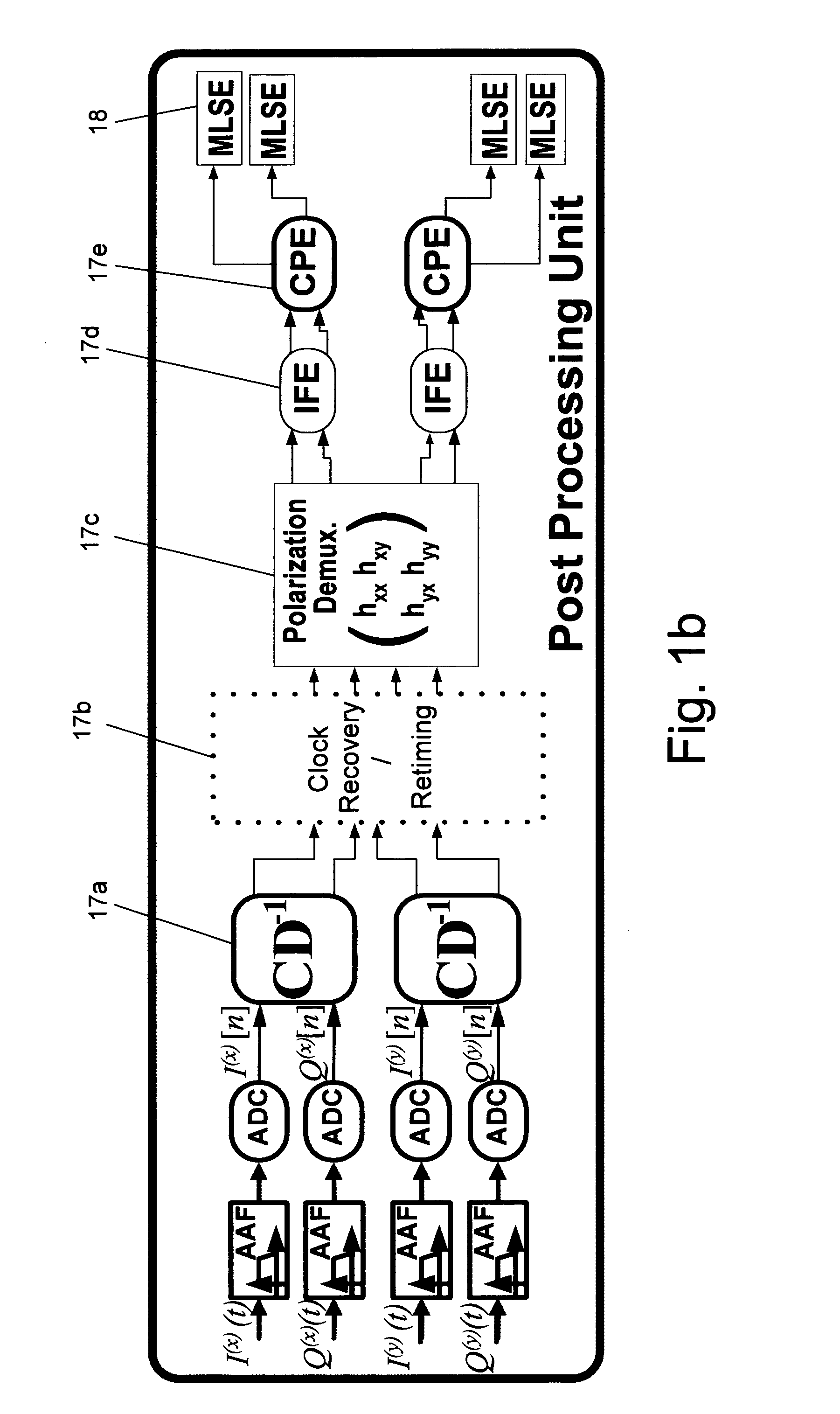Method and system for coherent equalization of chromatic dispersion of optical signals in a fiber
- Summary
- Abstract
- Description
- Claims
- Application Information
AI Technical Summary
Benefits of technology
Problems solved by technology
Method used
Image
Examples
Embodiment Construction
[0032]The present invention proposes a coherent detection method and system with a single sample per symbol and allows lowering the information bandwidth, the sampling rate and the processing rate with very low losses regarding Optical Signal-To-Noise Ratio (OSNR). The bandwidth is reduced by Anti-Aliasing Filtering (AAF), followed by an MLSE, which is used to compensate the ISI introduced by the anti-aliasing filtering. 50,000 ps / nm of CD is fully compensated with only 1 dB penalty. The combination of AAF and MLSE allows full equalization with one sample per symbol of transmission of 111 Gbps over CD of up to 50,000 ps / nm, with only 1 dB of OSNR degradation.
[0033]FIG. 1a is a block diagram of a system for optimally equalizing the distortion of an optical data channel, according to an embodiment of the present invention. This example depicts a single polarization-channel model out of the simulated Dual-Polarization Quadrature Phase Shift Keying (DP-QPSK) 111 Gbp / s system. Only a sin...
PUM
 Login to View More
Login to View More Abstract
Description
Claims
Application Information
 Login to View More
Login to View More - R&D
- Intellectual Property
- Life Sciences
- Materials
- Tech Scout
- Unparalleled Data Quality
- Higher Quality Content
- 60% Fewer Hallucinations
Browse by: Latest US Patents, China's latest patents, Technical Efficacy Thesaurus, Application Domain, Technology Topic, Popular Technical Reports.
© 2025 PatSnap. All rights reserved.Legal|Privacy policy|Modern Slavery Act Transparency Statement|Sitemap|About US| Contact US: help@patsnap.com



